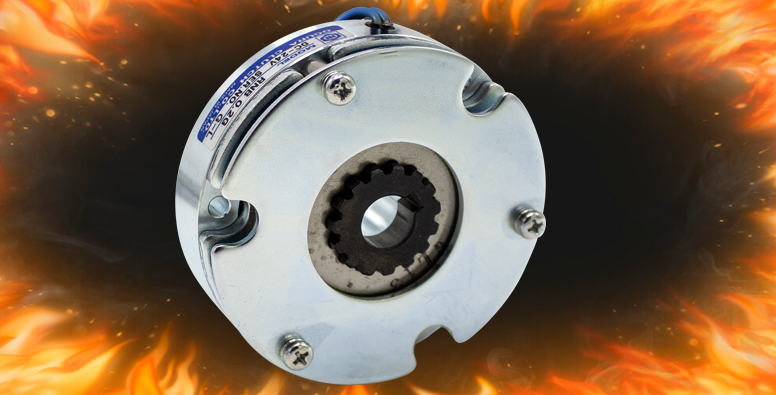Welcome Friend!

What happens when my brake gets too hot?
Electromagnetic brakes transmit torque mechanically but release electrically.
Ogura electromagnetic brakes are constructed with a coil that acts as an electromagnet when power is applied. They are most commonly the spring applied type but can also be permanent magnet type. They are used on electric vehicles as parking brakes, on warehouse automation equipment, on servo motors, medical equipment, actuators, doors, gates and security systems, factory automation equipment, elevators, and escalators.
When power is applied to the coil, the coil acts as an electromagnet to release the brake. The electromagnetic flux crosses the airgap to pull-in either the pressure plate or armature plate to release the brake and allow free shaft rotation. The resistance of the coil is specific to the brake design and is set at the factory.
Resistance naturally changes when the temperature of a coil changes. But what if the temperature is extreme? Brakes, like motors, are rated to a thermal class. For example, if a brake is rated to Class F, then it corresponds with 155C upper temperature limit. If the limit is exceeded, we should expect the insulation to become degraded and the resistance will now become lower. If the coil resistance becomes permanently lower, then it will take more power to release the brake. In general, it is also observed that prolonged exposure to higher temperatures of any kind will degrade insulation to some degree. In other words, longer exposure equates to higher expectation of insulation degradation.
Brakes are also rated for dielectric strength. For example, a brake could be rated for dielectric strength of AC500V for one minute, and AC600V for one second. This means that the brake should not be permanently harmed by such a short duration of voltage during testing.
It is best to keep the brake cool for the longest life and health of the coil insulation. When powered, the brake acts as a heat source and needs to dissipate that heat. Any external heat encountering the brake should also be avoided, if possible, to prevent overheating. If a brake is subjected to heat with limited opportunity to dissipate heat, it might be suggested to specify a larger brake to increase surface area and heat transfer. By allowing a coil to stay cooler for longer, it will extend the overall life of the brake.
One way to reduce the operating temperature of a spring applied brake is to release the brake with normal power/voltage, and then use PWM (pulse width modulation) to lower the average voltage. When the brake is released, the magnetic flux no longer needs to jump an airgap and the inductance becomes stronger. It requires less power to keep a brake disengaged than it does to disengage it. Every machine is different, but it requires about half the power to maintain the disengaged status.
Ogura offers a wide variety of power off brakes, including spring applied parking brakes for new innovative designs. Holding torque can range from extremely low, up to 800Nm or beyond. MCNB and RNB series are the most popular. Other series also exist so that brakes can take on frequent dynamic stopping in addition to just holding and e-stops. Those series include SNB and MNB. Installation is simple and maintenance requirements can be little to none.
Benefits of Ogura power off brakes:
- Long life
- Quality
- Safety
- Reliability
- Customization and optimization
- Low total cost
